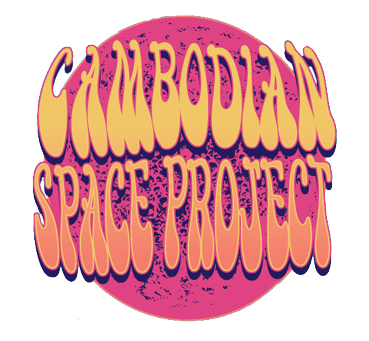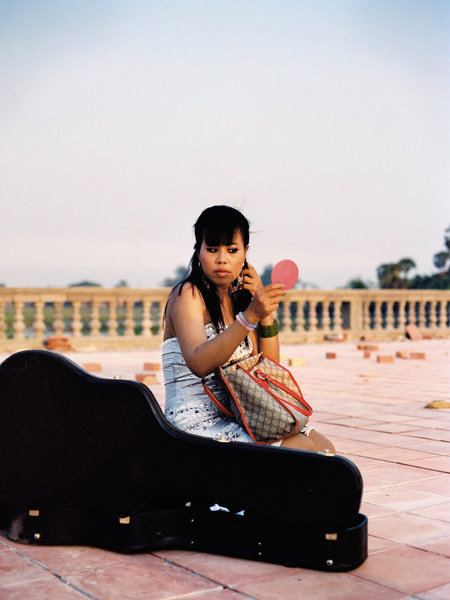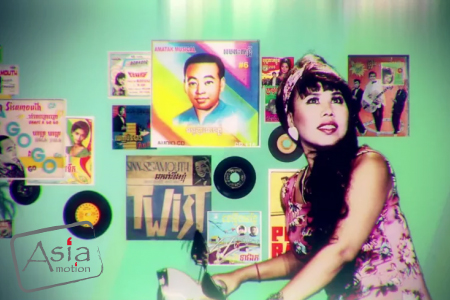
When we first met, her world and her words were a mystery to me, but she sung and I listened nonetheless. Srey Thy exuded grace and charm and had a way of expressing her thoughts and feelings through her songs. Seeing her sing her early songs along with her gentle swaying and Khmer dance style stays with me, resonating in her way, a way of great beauty coming straight from the heart and soul.
So here I am, 5 years since Channthy passed way, and I’m now tasked with a somewhat daunting but very wonderful new opportunity to compile, and share with you, the songs of Kak Channthy. It’s with thanks to my friend Vincent Tornatore, and his record label Lion Productions, that this is happening.
Together, we’re sorting through the original songs of Kak Channthy and preparing to release volumes 1 and 2 on high-quality vinyl LPs. Anyone who knows the catalogue of psychedelic Cambodian rock and the great songs of Sinn Sisamouth will be more than aware of the excellent Groove Club releases coming out of Tornatore’s label Lion – the little label from Geneva, Illinois, that proudly “champions the obscure”, bringing to music lovers, the best selection of Cambodia’s lost rock’n’roll. Once upon a time in the USA, while on tour with the CSP, we even took a side trip, of some 500 kilometres, just to go visit Vincent and meet the man behind the Groove Club Cambodia series. Needless to say, I’ll thrilled to start working on two very special new releases dedicated to sharing the songs of Channthy – but it’s no simple task.
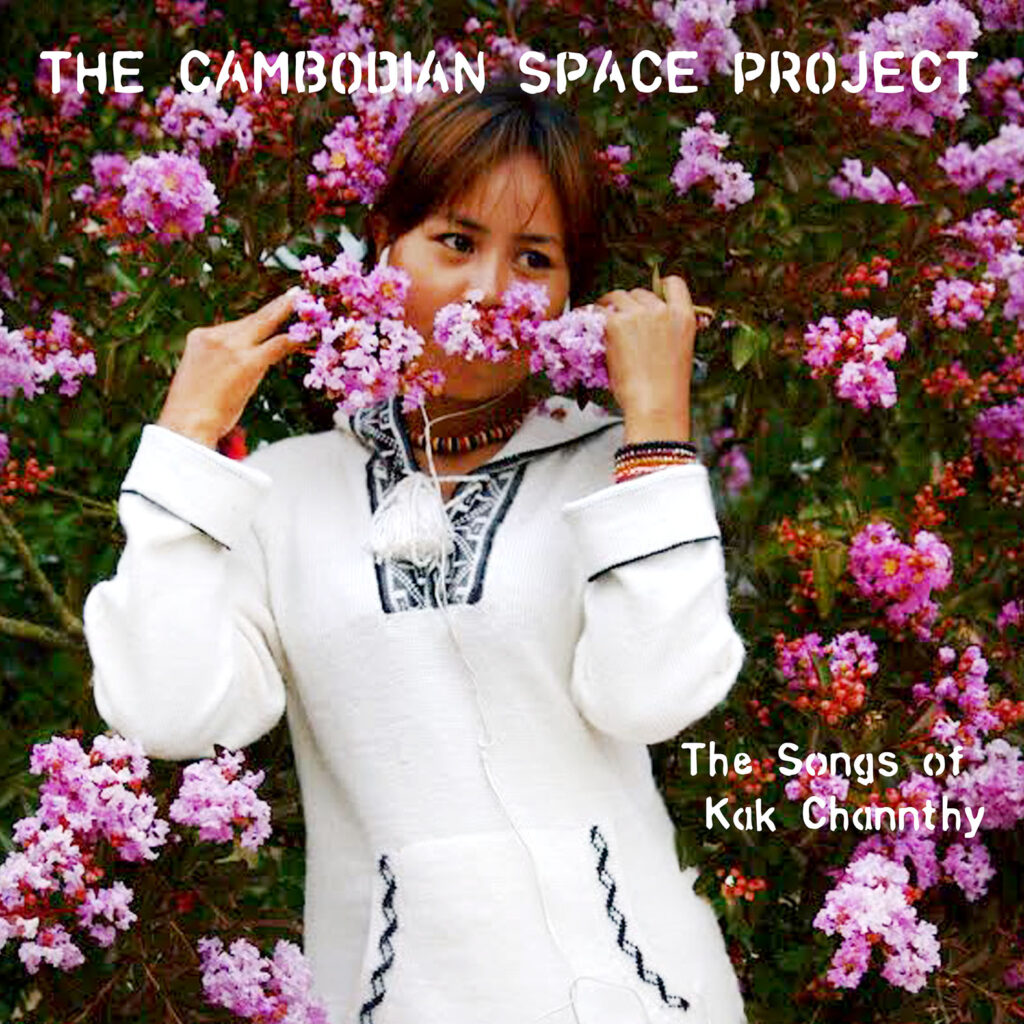
Channthy’s songwriting was something that grew with the band, and as her co-pilot on this journey, I could see that she was a natural, a gifted storyteller, and soon understood that she was someone who was proud of her culture and where she came from “I’m small bird from Prey Veng” and she loved to share this. Just recently a friend in Phnom Penh stopped me as I was passing a little riverside restaurant, it was Pozzy, who was enjoying a meal with his Khmer Australian family. We hadn’t seen each other in a while but have a great connection through music and also the professional support for Channthy and CSP members through his Easy Aus Visa company. We got to chatting about the feeling of missing Channthy’s voice soaring into the night air in what was one a low-rise city where we enjoyed many live gigs with the CSP. Pozz reminded me that Thy’s chatter and storytelling in between songs was such a special part of the live shows. “you know Bong, many in audience couldn’t necessarily understand what she was saying but it didn’t matter… it was fun and funny and she was very proud of her culture and loved sharing this”. This reinforced what I was feeling and now with this new opportunity to release her music, this is what I hope we can convey to her fans and to new listeners discovering the music of Kak Channthy and the CSP for the first time. It is an inspirational story through music and songwriting.
Songs of Hope
I may have been early 2010 when I first organised some studio time with the idea to see what we could do with a decent microphone, a group of musicians and our newly discovered song bird Srey Thy (she later changed her name to Channthy meaning Moon and Earth). Thy and I played our first live show in a little called the Alley Cat, where we managed a short set of covers of Pan Ron and Ros Sereysothea songs along with a few of my own songs in between repeating Srey Thy’s songs, again and again. By the end of this first show, we’d pretty much formed a band with other musicians who’d been part of our audience that night.
Probably the most endearing this about this ‘jam session’ was the culture clash taking on a shape of its own and soon leading to a loose group of odd balls I dubbed The Cambodian Space Project. But the other enduring memory was of Channthy clasping her handwritten songbooks – two dog-eared school kid scrapbooks, she’d also shown me these at rehearsals at home. Books she’d worked with for sometime… a collection of song lyrics, beautifully hand-written in Khmer script and as she noted, mostly in her own script… a short-hand that no-one else could read or understand. These were the songs of Ros Sereysothea, Pan Ron, Houy Meas, Sinn Sisamouth… songs of Cambodia’s great golden era artists – the artists who were all murdered by the genocidal Khmer Rouge. So this is the music we began with and where I started wondering about the meaning and language of these songs as much as I began to understand what they meant to Channthy. This was music as her solace, songs of survival and hope. I couldn’t wait to record with Thy.
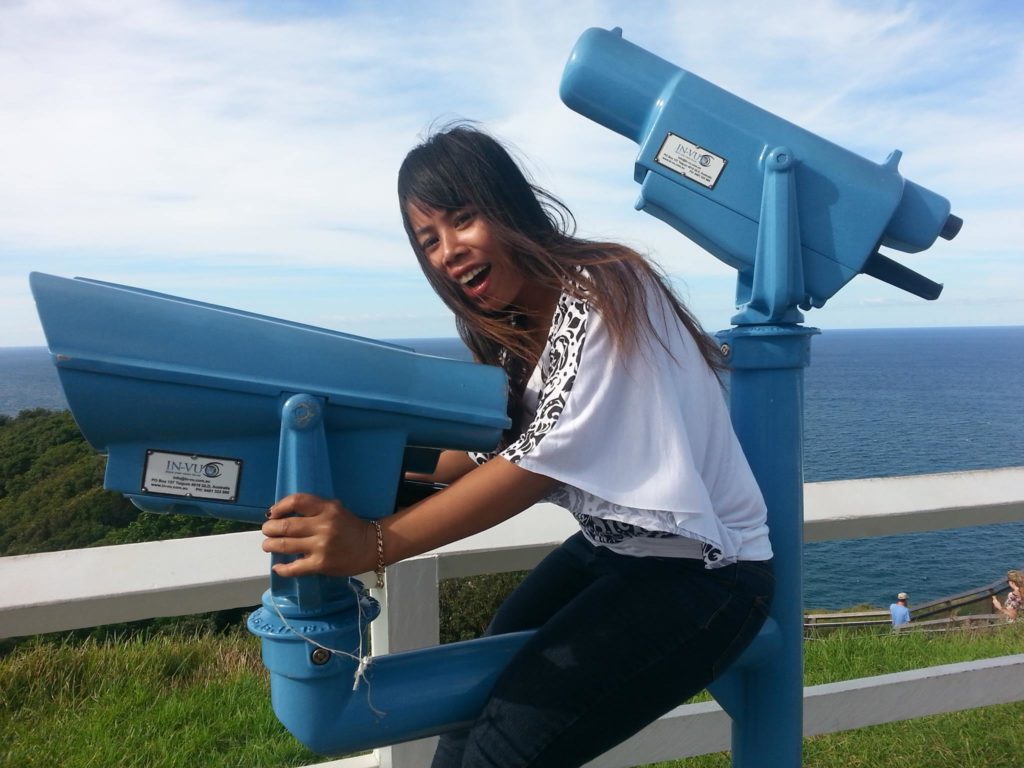
At first, the recording session as the Bodhi Villa in Kampot was rough’n’ready in comparison to what I was used to and hoping to achieve but this was too be expected. None of us really new each other and this studio was really a hobby project of the musician/guesthouse owner Hugh Monroe. It was more a party hangout for foreigners than a place remotely familiar to and comfortable for Srey Thy, still, it was a great place to start an incredible journey and somehow bring two worlds together in song. I’ve just listened back to the recordings… some 6 songs of very lacklustre jamming over a bunch of Cambodian covers (needless to say, our performances improved along the way) and thankfully, one brilliant stand-out song – the only original song in the bunch and this is a track Thy sang as a kind of prayer for hope and good luck for all. It’s called Mondulkiri and is something she described as singing to a spirit in the mountainous province of Mondulkiri Cambodia. Not long after the session, I met a German DJ/musician in Phnom Penh who offered to have a go at a mix down on this track – Jan Mueller’s resulting work, coupled with the cinematographer of James Flemming who shot a beautiful and totally impromptu clip of Srey Thy demonstrating some dance on a rooftop in Phnom Penh early 2010 – a reflection of the beauty and tranquility of Cambodia.
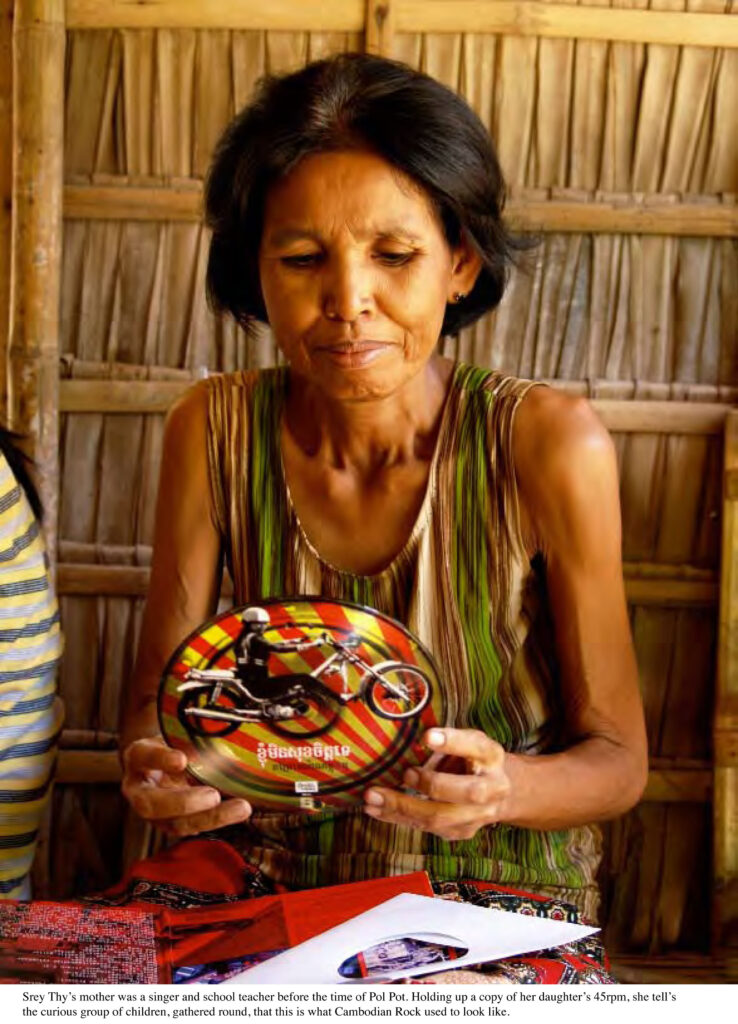
Making Records
CSP’s first release is also the film vinyl pressing by a Cambodian artist since 1975. We didn’t set up to achieve this as a first but it is the debut release by The Cambodian Space Project and, for us, it set in motion many more releases where we would mix cover songs with our own original songs and sometimes a blend of both. The thing I love about this 3 track EP is that it’s got Channthy’s cover of Sin Sisamouth’s cover of The Animals classic House of the Rising Sun – itself a cover of a cover with its folk origins going way back to 16th century English drinking songs. The title track is Kynom Mon Sot Jet Tay – someone recently pointed out that this song, meaning I’m Unsatisfied, was originally titled KOMLOS JRES CHAB. Finally, the pressing included another great song called If You Go I Go Too – like Mondulkiri, this is also an early song from the catalogue of songs by Kak Channthy. We have recorded a couple of versions of this track, I like them all, it’s a song with a whole lotta soul and still stands up as one of our best.
It’s a funny thing…
CSP’s first album was tracked at a little studio in Phnom Penh. A very basic recording room but apparently the fancy German mic’s had been donated by Peter Gabriel. Best this about the studio at Cambodian Living Arts was meeting up with a team of young Cambodian artists, musicians, filmmakers and sound engineers – all who have gone on to do great things. But the hard part of this stage in proceedings was having people take Channthy’s work seriously… it’s a patriarchal society in Cambodia and there’s little room for strong female songwriters, especially if they’re from the dirt poor communities such as Channthy’s village in Prey Veng. That’s the way I saw it and still do, but here we had something and someone different… Srey Thy was quietly determined to kick the door down… and soon she was adding her own stories to old tunes… Have Visa No Have Rice was a hit with CSP fans right from the get go. It was only original song on our first album 2011: A Space Odyssey and the first music video… a hilarious message about the refusal of her Visa applications and dealing with the French Embassy in repeated applications for a travel visa. The visa was eventually granted and Thy and CSP were soon celebrating the band’s first trip and musical tour to France.

Not Easy Rock’n’Roll
I recently caught up with Channthy’s son Makara who is fast becoming an electronic music producer and emerging filmmaker. I asked Makara what was his favourite song from the CSP releases? His immediate response was Not Easy Rock’n’Roll... for a moment, I’d forgotten about this great song as my mind has been elsewhere, working on many new things and not taking time to reflect as i’m doing now. But yeah, this song’s a cracker! funny recall Thy telling us about it at a rehearsal… pretty much summing up her impressions of touring, being in a band on the road… the same kinda of sentiment Bon Scott expresses in It’s A Long Way To The Top… but in Khmer, coming from a singer from the provinces and performed with a kind of latin swing… another great song and one that brings Thy’s brilliant sense of humour and irony right into the centre of the picture.
By the time we got to our third album, there’d been much water under the bridge. We recorded Whisky Cambodia over a summer month in Detroit, the year the city was officially declared bankrupt. It was not an easy time for us. Thy had lost her mother and her father wasn’t long behind her. She’d lost a pregnancy to miscarriage and had lost all enthusiasm for touring, songwriting and recording. At the same time lots of new enquiries and impressive bookings were coming in for CSP.
We were also working on things like music theatre show Galaxy Khmer which we toured to Germany and Norway, and were caught up with Marc Eberle’s BBC4 film project Rise of A Pop Diva documenting CSP and her life on the road – while in Detroit we laid down tracks at Rust Belt studios with Motown legend Dennis Coffey.
Dennis was great to work with, he’d really taken apart the demos we’d sent ahead of landing in the studio, and this meant that Thy’s original songs such as Mountain Dance, Here Comes The Rain, Whisky Cambodia, really shape-shifted into a wonderful new dimension. The trickiest song to get in the can was a new one Thy and I had struggled to complete, in fact, we’d left Black To Gold to a follow up session at Rust Belt Studios, and had taken time to travel and explore a bit of USA by train. When we returned after a trip to Seattle and Portland, getting back in the studio and jamming out songs made a lot more sense. We’d also met Jim Diamond in Detroit – famous for his Ghetto Recorders, bass playing with The Dirt Bombs and his moment as hit making producer of The White Stripes. Getting down to Jim’s studio and jamming with Channthy was a great experience, you can see in the video of these sessions just how much Thy loved the studio and recording down there in the middle of the “D”.
Whisky Cambodia
Around the same time, Channthy was working with Sydney-based hip hop group Astronomy Class, she’d joined AC in Sydney and recorded a lot of lyrics and vocals against songs they’d created using samples from old Khmer recordings – mostly sourced one afternoon while strolling through the Cambodian restaurants and shops in Cabramatta. The resulting work is an excellent release and the biggest surprise is the hugely popular hit song Woman Wants to Drink. This is something Channthy would talk about and joke about – she touched alcohol at the outset of this journey – pointing to bottles of Vin Rouge behind the bar in Paris and saying things like “I’ll have one glass of those black wines”.
Still, the song Woman Wants to Drink is a great example of her wit and self-referential story-telling. Initially she wasn’t even created as a songwriter on this release Mekong Delta Sunrise but with subsequent remixes and re-workings by Cambodian production companies there seems to be some more acknowledgement of her role. The song keeps popping up in very cheesy looking beer commercials and can be heard at virtually every party in Cambodia. I guess this should be a surprise, drinking songs and songs about drinking a popular in Cambodia…you can here the Golden Voice of Phnom Penh – Ros Sereysothea singing about drinking Hennessy Soda, or another fabulous song Sra Mouy Keo (Ros Sereysothea) ស្រឡាញ់អូនទៅ.
Electric Blue Boogaloo
EBB is CSP’s fourth official release. It was recorded by Jim Diamond in France in a little village called Écotay-l’Olme in the Loire department of central France. This time round Jim had joined CSP on bass guitar and along with our UK based drummer David Eugene Webb as well as a brilliant group of guest musicians from France, we tracked 13 songs, many of them original songs, some of them re-workings of old songs – old songs from everywhere but on this LP, just a couple of Cambodian covers and that was a re-recording of our first single Kynom Mon Sot Jey Tay plus a little known Pan Ron song. Actually, the early female singers of Cambodia’s Golden Era rarely traveled outside of their country and are not credited as songwriters of their own material. But on this session we’re in a very different world. Channthy would hear all sorts of music while traveling and immediately ask about things she’d stumble across – singer/songwriters new to her, people like Grace Jones heard on a Taxi’s radio in Detroit, Bob Dylan “Everything’s Broken” heard on a drive to Switzerland… Nick Cave she’d listened to his material after a chance meeting at a gig in Bali. But she’d pick up on early Italian Garage too, singers like Rita Pavone in the freak beat era. All these new and old influences plus a flagon of duty free rum she’d brought from Reunion Island… helped shaped the EBB sessions… songs like Saravan Rap, Before The Fall, It’s Not Easy Rock’n’Roll, Now I Understand Love, Rom Ding Dong are great examples of Channthy’s rock’n’roll. Other things including Serge Gainsbourg/France Gall track Laisses Tomber Les Filles and Shocking Blue’s Demon Lover are covers but with her own lyrics and are totally unique to Channthy’s interpretation.
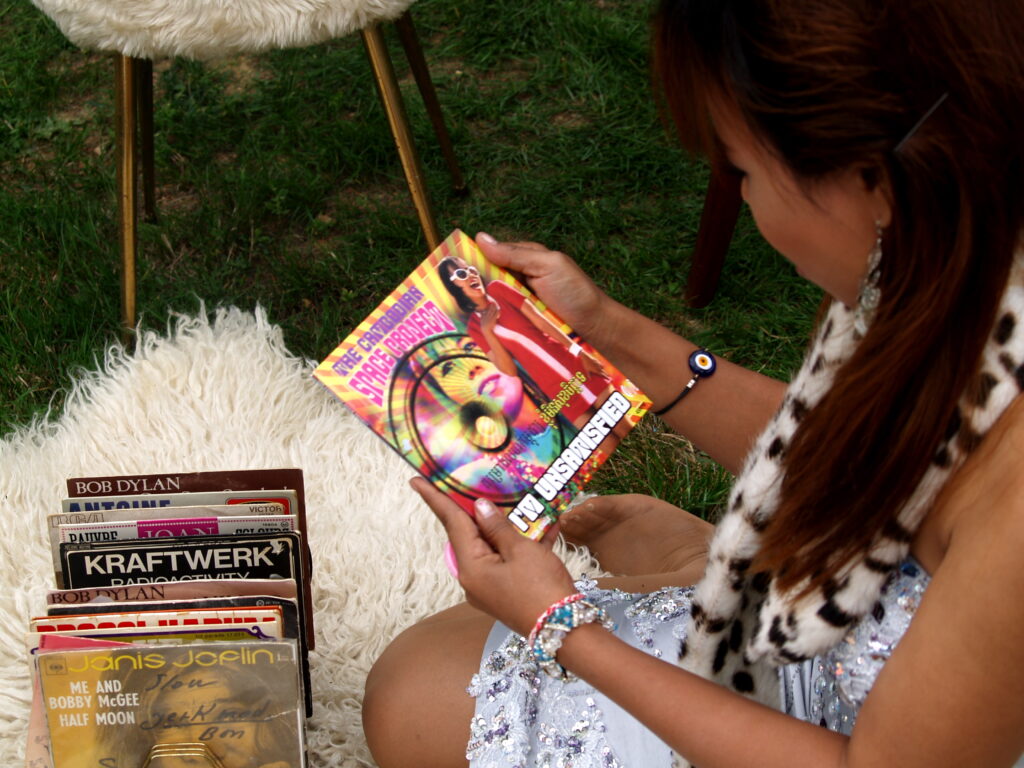
The girl’s away but her heart’s at home
Channthy never forgot who she was and where she came from. The “Bare Foot Diva of Prey Veng Province” and other ascribing statements such as the Amy Winehouse of Cambodia might be of use in describing who she was in her musical journey to those who are yet to discover Channthy’s songs and her extraordinary life story. However, it’s her own songwriting which is the most accurate and autobiographical… these are super-fun songs filled with joy and hilarity Rom Ding Dong, Have Visa No Have Rice, through to absolutely heartbreaking and moving works such as Broken Flower and Lullaby for Makara. But most of all, Channthy’s songs a storytelling, troubadour songs… all about the journey, the ardour of life on the road, with its high highs and low lows, and always about bringing everyone together.
Quite of few of our acoustic tracks and demos were made in Bali at Jay Thorpe’s home studio. These sessions included titles such as Divorced Brown Girl, The Girl’s Away But Her Heart’s at Home, Where I Go?, and the stunning collaboration with Australian poet laureate Paul Kelly on The Boat – a heartbreaking ode to refugees who flee war and conflict and make dangerous voyages to seek safety over the seas and upon distant shores… in many ways the song The Boat is Kak Channthy at her best.

For me, it’s a privilege to have been on life’s journey with Kak Channthy, soul mates, co-pilots, lovers, music makers, and yes… space trippers. Looking back through our recorded catalogue is a joy and leaves me feeling so lucky to have been a part of creating this, bringing together Channthy’s voice and stories with my guitar and studio ideas. I’m looking forward to pressing and releases Channthy’s songs and have already discovered a beautiful unreleased song (yet to be titled). So, with these thoughts here, it is with much love and care that I’ll put into The Songs of Kak Channthy and hopefully bring this inspiration to you and to new artists, including new music by the CSP on the road ahead. There’s much to be done, more work on a documentary Land of 1000 Dances and on a book so stay tuned.
Kak Channthy
“C’mon… everyone dance, dancing all together”, “Don’t Look People Down… this one’s called Mountain Dancing”.
